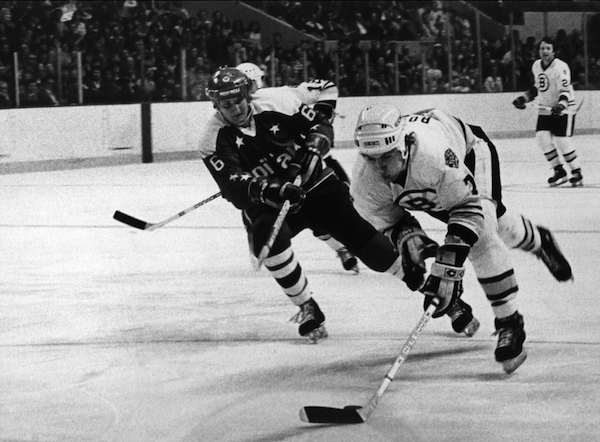Dear Sports Fan,
Why is the two line pass rule gone in the NHL?
Thanks,
Jordan on Fancred
Dear Jordan,
The other day, I wrote a post about the history of rule changes in the National Football League. In football, the majority of rule changes have been intended to keep football players safe from injury. The National Hockey League (NHL) has been more split in its motive for changing rules. In hockey, some rule changes are intended to increase the safety of hockey players and some are motivated by a desire to increase goal scoring. I would say the rule changes are split pretty evenly between those two reasons. In 2005, following a year-long lockout that resulted in the loss of the 2004-2005 season, the NHL introduced a set of rules aimed at increasing the number of goals scored. The removal of the two line pass rule was one of these changes.
The two line pass rule, in place from 1943 to 2005, prohibited teams from passing the puck from their own defensive end of the rink to a teammate who was already on the other team’s side of the rink. It was actually very much like an offside rule. In our post on offside rules from sport to sport, we reduce offside rules to a simple trio: a line, an event, and an order. This works remarkably well. The two line pass rule stated that a player could not receive a pass from a teammate in their team’s defensive zone if he was over the halfway line before the puck crossed the line. Like the current offside rule in hockey or in some ways the icing rule, the two line pass rule was intended to prevent a team from cherry picking by leaving one player near the goal the team is trying to score on. Hockey is a team sport, the rules seem to be saying, you must move the puck up and down the rink as a team.
The problem was that defenses learned to use this rule to their advantage. They knew a team was not allowed within the rules to pass from behind the blue line that separates their defensive zone from the middle third of the rink called the neutral zone to the other side of the red halfway line. To stymie their opponents, teams would clutter up the area between those lines with as many players as possible to prevent passing. They didn’t have to worry about anyone getting behind them and skating easily for an easy chance on net because passing to a player in that position would be illegal. This tactic was called the neutral zone trap and it was both highly effective and passionately hated for creating low-scoring, boring hockey games.
By eliminating the two line pass rule, the NHL felt it was encouraging longer passes, more dynamic offensive plays, and eliminating a defensive strategy that made its sport less fun to watch. The jury is still out on whether it worked. There are three arguments against the rule change. First, scoring has not increased. After a short bump following the rule changes, the goals per game average fell back down to where it had been before the two line pass rule was eliminated. So far this year, an average of 2.76 goals are scored per game, which is right in line with the averages in the late 1990s and early 2000s. The second argument against the removal of the two line pass is that it goes against the other key motivator for rule changes. Getting rid of the two line pass rule has made the game more dangerous for its players by allowing for faster play that takes place over a larger area of the rink. As we know well from football, a faster moving, more free flowing game is exactly what causes brain injuries and concussions to be such a problem. Some have called for the NHL to bring back the rule to slow the game down and make it safer. Last, it’s also possible that getting rid of the two line pass has made the game less interesting to watch. Oh, sure, it seems crazy given that those neutral zone trapping teams were famously boring, but the alternative is not great either. Passing through the neutral zone is still a dicey proposition fraught with the dangers of having an opponent steal the puck, so teams have adopted a tactic where they send a player up to their opponent’s blue line, rifle a hard pass up to him, and have him simply deflect the puck into the opponent’s zone and then chase it. It’s safe and legal but it doesn’t have the artistry that was required when the two line pass rule was in effect.
Thanks for asking,
Ezra Fischer

